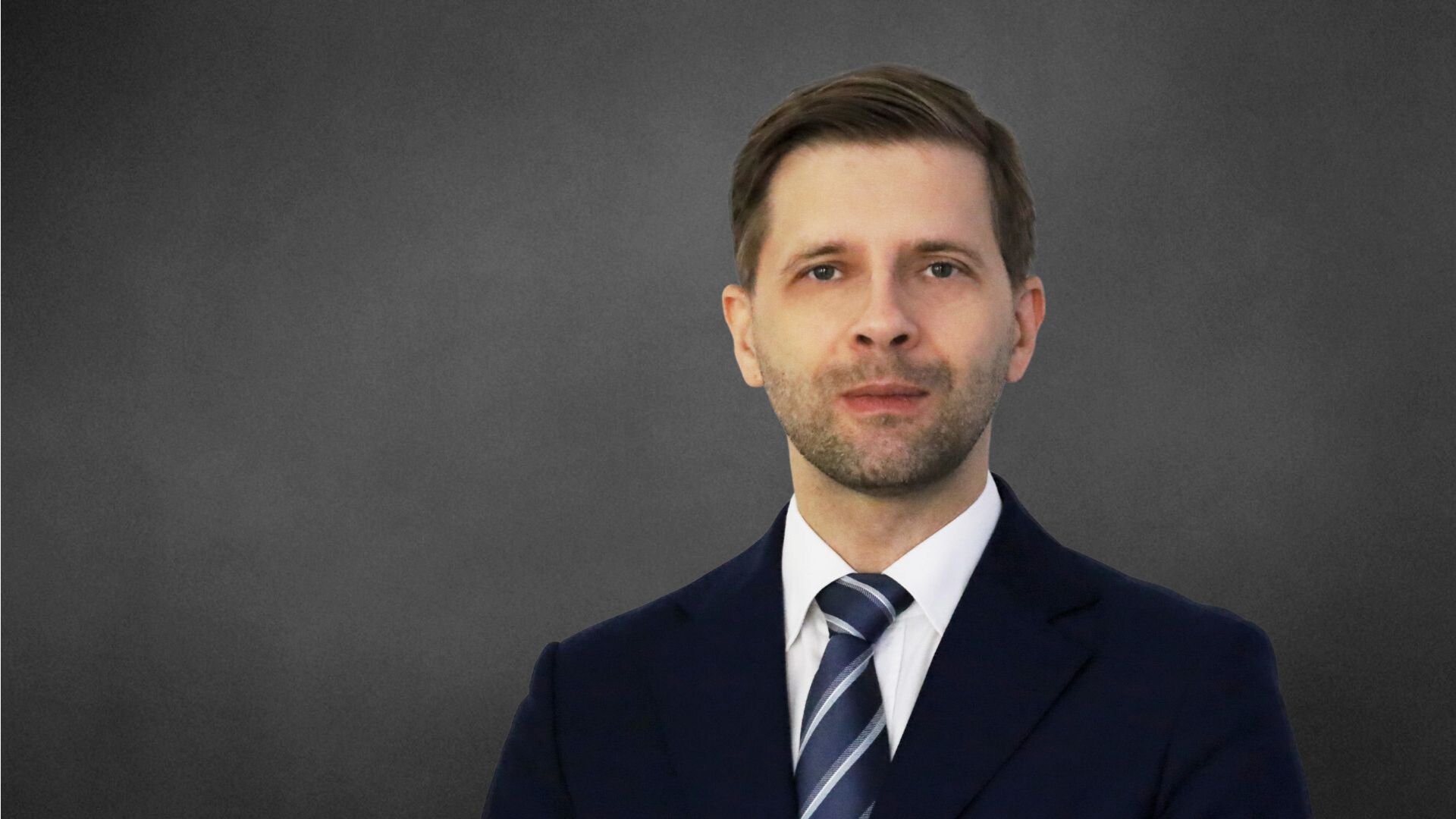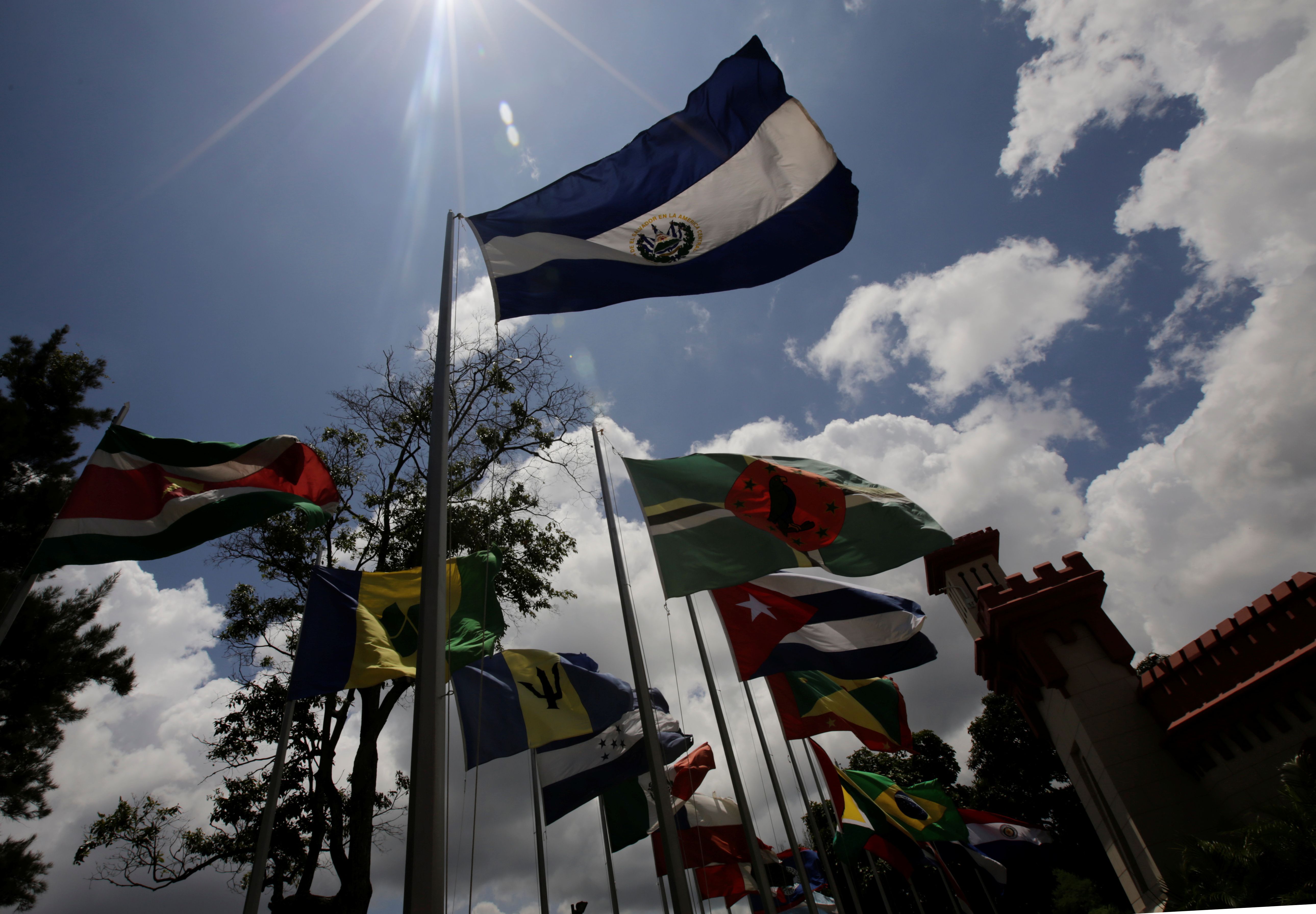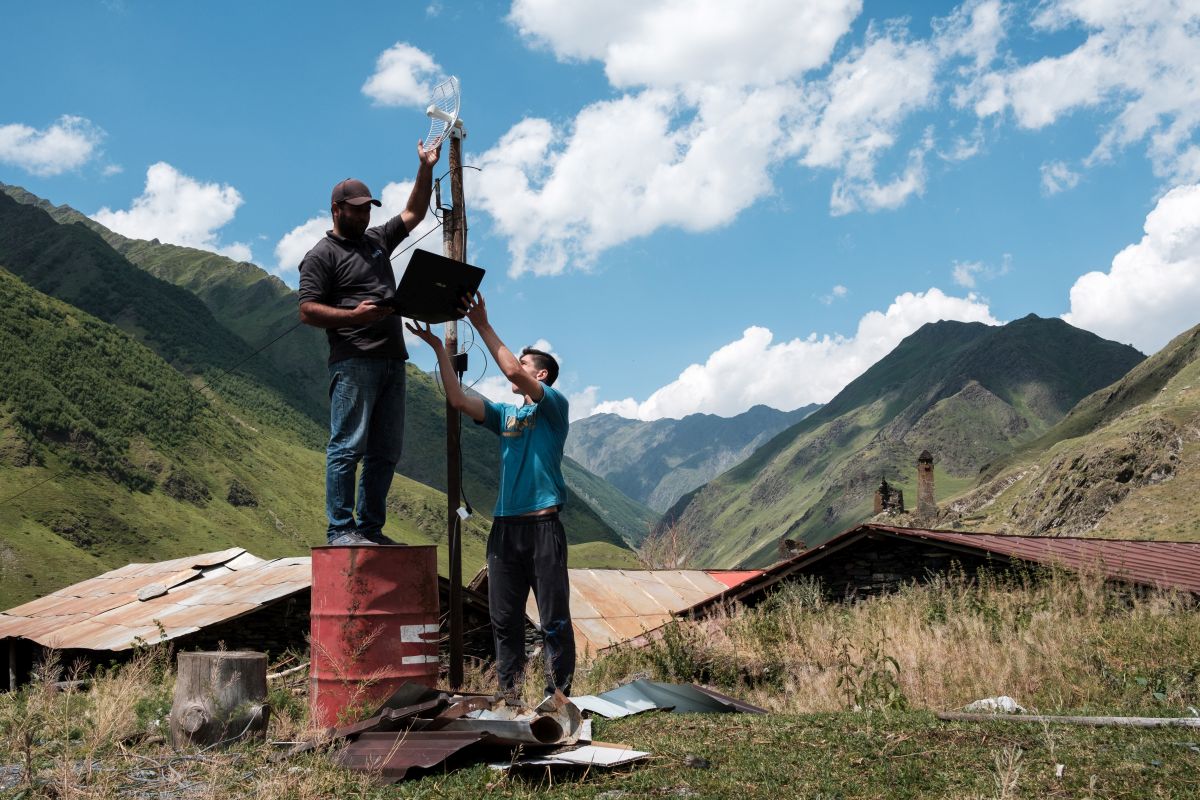EU Advances Engagement with Latin America and the Caribbean
In its strategy towards Latin America and the Caribbean (LAC), announced on 7 June, the European Union mainly proposes cooperation in defending the rules-based international order, enhancing economic ties, and promoting sustainable social development. It is part of the EU’s drive to renew its strategic partnership with LAC to compete more effectively with China’s growing regional presence, among other reasons. The Union is therefore intensifying contacts at the highest level and engagement through the Global Gateway infrastructure investment programme.
.jpg) Pignatelli/EUC / Zuma Press / Forum
Pignatelli/EUC / Zuma Press / Forum
Last October, participants in a ministerial meeting of the EU and the Community of Latin American and Caribbean States (CELAC) in Buenos Aires agreed on an ambitious agenda to revitalise the bi-regional partnership. It included a series of sectoral meetings until the end of 2023 and, most importantly, the first EU-CELAC summit of heads of states and governments since 2015, scheduled for 17-18 July in Brussels. As part of this process, in June, the European Commission (EC) and the High Representative of the Union for Foreign and Security Policy Josep Borrel presented a new concept for EU-LAC relations through a Communication to the European Parliament and the Council of the EU. The document replaces the strategy valid since 2019 and introduces a revised hierarchy of the main areas of cooperation with the region and an updated set of objectives and tools, among other changes.
Key Elements of the EU’s Vision
The European Union justifies the need for closer ties with LAC with traditional arguments about special historical, cultural, and economic ties and shared values and interests. However, it also argues that the two regions should be each other’s “partners of choice”, which jointly can tackle global challenges, for example, the climate crisis, the effects of the COVID-19 pandemic, and Russian aggression against Ukraine, as well as technological advances.
The Union identified three principal axes of the partnership: strengthening the international rules-based order and promoting peace, democracy, and the rule of law, among other areas; enhancing economic relations; and working towards “open and sustainable societies”. On this basis, it defined six main objectives for cooperation with LAC.
First, the EU wants to intensify political contacts, starting with re-establishing regular summits with CELAC. It proposes a permanent coordination mechanism to ensure the continuity of the dialogue and to follow-up on the agreed plans. Responding faster to changing circumstances, promoting new initiatives, and discussing specific issues as needed would also be in scope. The EU wants to revive collaboration with selected LAC partners (including Brazil and Mexico) and strengthen contacts with them in various multilateral forums, including the UN, G20, and OECD.
Advancing trade liberalisation is the second objective. The EU mentions the ratification of the EU-Mercosur agreement in the first place. The EU reaffirms its interest in cooperating with Latin American producers of critical raw materials, including in building stable supply chains. At the same time, it notes that it will be necessary to dialogue with LAC on the impact of instruments related to the EU’s Green Deal strategy (for example, a ban on imports of goods from illegally deforested areas and a border carbon tax) on the bi-regional trade. The third objective is to develop investment cooperation focused on supporting the green and digital transformations and financing projects via the Global Gateway. Public health and food security are also mentioned spheres.
The fourth objective concerns cooperation in public security, justice, and the fight against international crime, among other issues. The fifth objective includes the promotion of democracy, peace, the rule of law, and human rights. The EU proposes to develop cooperation for peace and security in the world, for example, through framework participation agreements, which may consist of cooperation in EU crisis-management operations. Furthermore, the Union singles out the problem of disinformation, wishing to work with LAC in combating information manipulation and interference (e.g., in electoral processes) by foreign actors.
Developing people-to-people relations is the last objective on the list. The EU wants to emphasise youth contacts and academic and scientific cooperation. It also mentions parliamentary diplomacy and collaboration with civil society and think tanks, including through the EU-LAC Foundation. The latter was set up in 2011 by the EU and the states of both regions to promote bi-regional relations, and it became an international organisation in 2019.
Implementation of the New Strategy
The concept announced on 7 June reflects the EU’s approach to relations with LAC developed since the beginning of the current EC’s term, particularly under Borrell’s influence. Since the beginning of this year, the EU has stepped up visits to LAC by its highest representatives: European Council President Charles Michel attended the CELAC summit in Buenos Aires in January; in March, Borrell participated in the summit of the Ibero-American Community, a forum of Iberian Peninsula states and Spanish- and Portuguese-speaking LAC countries, in the Dominican Republic; and in May, he visited Cuba.
EC President Ursula von der Leyen’s visit to Brazil, Argentina, Chile, and Mexico on 12-15 June was particularly significant. With the trip, she intended to confirm that the EU treats relations with LAC seriously and that it can be an attractive and reliable partner. Von der Leyen announced €10 billion from the Global Gateway for investment in the region—in each of the countries, she mentioned projects being funded, for example, green hydrogen production. In Brazil and Argentina, she announced that the EU wants to finalise the deal with Mercosur this year. She expressed a similar position in Chile and Mexico on new Association Agreements with those countries. Furthermore, she announced the support of the Brazilian Amazon Fund with €20 million. She thanked the visited countries for condemning Russian aggression against Ukraine in the UN. In Brazil, she discussed existing peace initiatives, including the one promoted by President Lula da Silva and Zelensky’s peace formula, which the EU supports. Spain, which holds the presidency of the Council of the EU in the second half of this year, will work to maintain this high momentum of EU-LAC relations.
Conclusions and Perspectives
The new EU strategy attempts to respond to the U.S.-China rivalry and Chinese economic expansion in LAC over the past two decades. However, these reasons are not explicitly mentioned. The EU’s particular emphasis on defending the rules-based international order results partly from the neutral stance of most LAC countries towards the Russian aggression against Ukraine. The EU wants to compete for influence in the region, primarily using the Global Gateway as a flagship tool for cooperation and a hallmark that allows the Union to promote its engagement in LAC more effectively. The EU is inviting all CELAC leaders to the July summit, unlike the U.S., which excluded representatives of three authoritarian regimes—Cuba, Nicaragua, and Venezuela—when it hosted the Summit of the Americas last year. The contentious concept of EU strategic autonomy clearly inspires the EU approach. Although the idea is not present in the 7 June Communication, Borrell and Von der Leyen referred to it when discussing relations with LAC.
The EU’s comprehensive and ambitious targets will be difficult to achieve. The success of the Global Gateway depends on the EU effectively mobilising its funds and encouraging private-sector investment commitments in LAC. The EU has the opportunity to strengthen cooperation with selected countries, including major economies or producers of critical raw materials needed to build a low-carbon economy (e.g., lithium). Finalising trade agreements will remain a challenge. In the case of the agreement with Mercosur, the deadlock is deepening. In the EU, the main opposition comes from France because of resistance from the agri-food sector. In Brazil, President Lula disagrees with giving the EU access to government procurement and criticises the EU intending to restrict trade in response to illegal logging.
The EU-CELAC summit in July will demonstrate the importance that individual countries attach to revitalising relations. High-profile representation of the 60 countries of the two blocs may help to strengthen mutual commitments and ensure long-term interest in the development of the partnership. For Poland, which will be represented by the prime minister at the summit, the meeting will be an opportunity to enhance the political dialogue with selected partners in LAC, suitable especially in the context of the war in Ukraine. The revival of EU-CELAC relations, including progress in trade liberalisation, cooperation in the digital sphere, and the creation of stable supply chains linked to the green transition, will be beneficial for the Polish business sector. In people-to-people contacts, opportunities related to, for example, scientific and academic cooperation may expand.





.jpg)